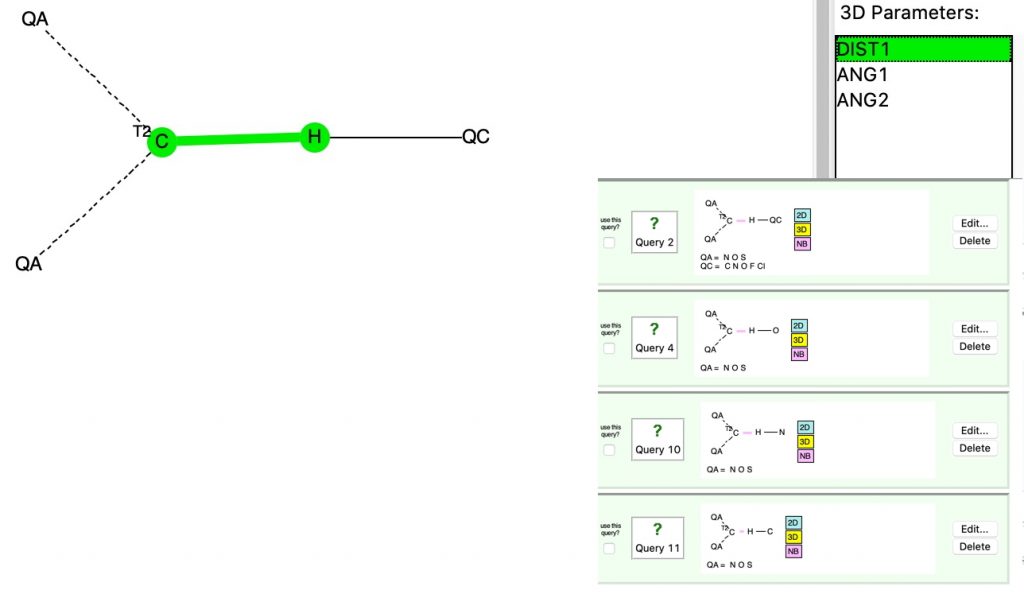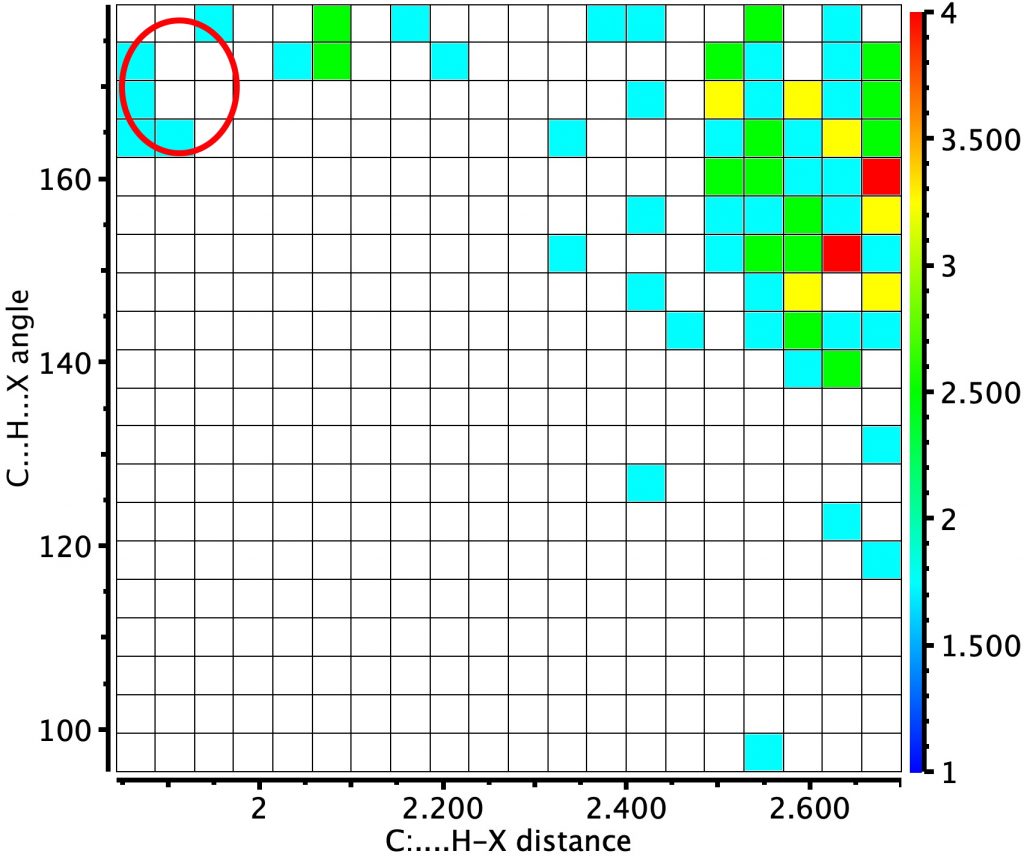A hydrogen bond donor is considered as an electronegative element carrying a hydrogen that is accepted by an atom carrying a lone pair of electrons, as in X:…H-Y where X: is the acceptor and H-Y the donor. Wikipedia asserts that carbon can act as a donor, as we saw in the post on the incredible chloride cage, where six Cl:…H-C interactions trapped the chloride ion inside the cage. This led me to ask how many examples are there of carbon as an acceptor rather than as a donor?
The basic query is constructed as above: in order to act as an acceptor, the carbon must bear a lone pair of electrons, of which a carbene is one example (Query, see DOI: 10.14469/hpc/6531). Thus we have QA=O,C,S and the central atom has only two connected atoms. When QC is any of C,N,O,F,Cl, we get the following result. The red circle corresponds to QC=O.
The shortest example of these is shown below, with a C:…HO distance of 1.91Å nominal but about 0.1Å shorter if corrected for the over-short H-O bond (Data DOI: 10.5517/ccvm80q)[cite]10.1039/c0ob00999g[/cite]
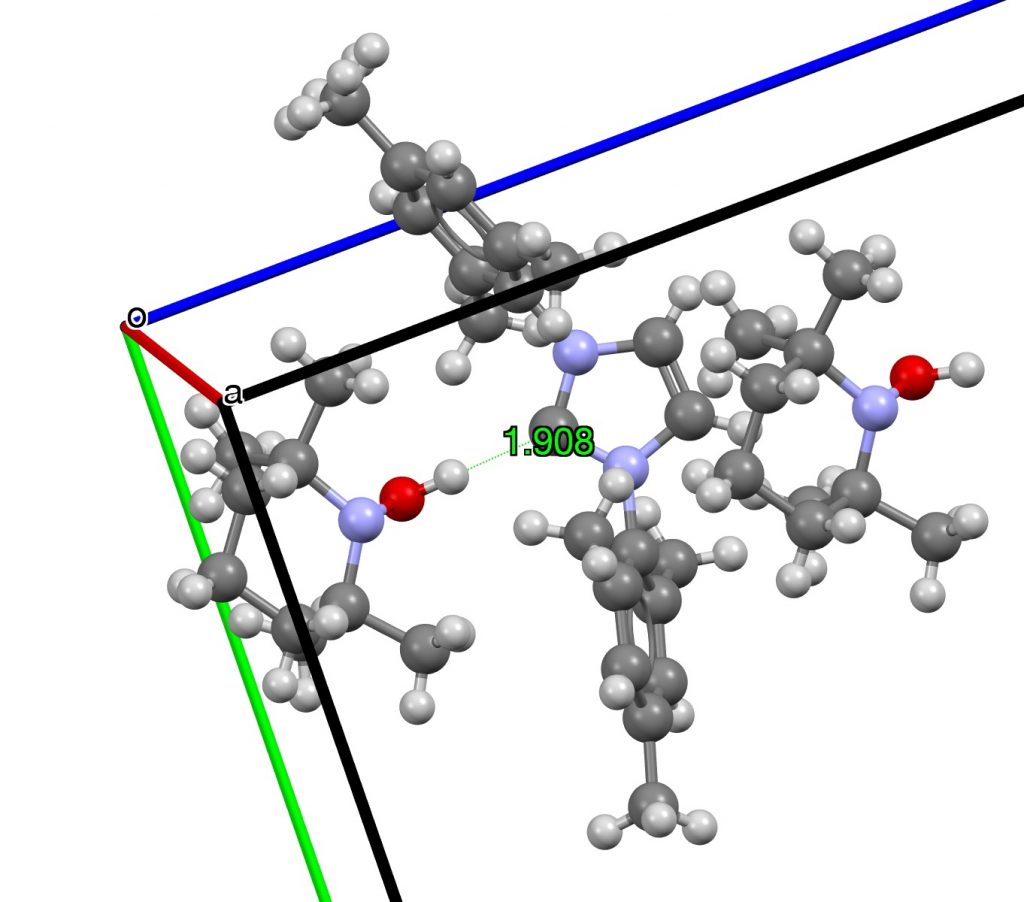
Click image to view 3D
The shortest C:…HN example is shown below with a distance of 2.07Å (DOI: 10.5517/ccdc.csd.cc21tzql)[cite]10.1021/jacs.9b04864[/cite]
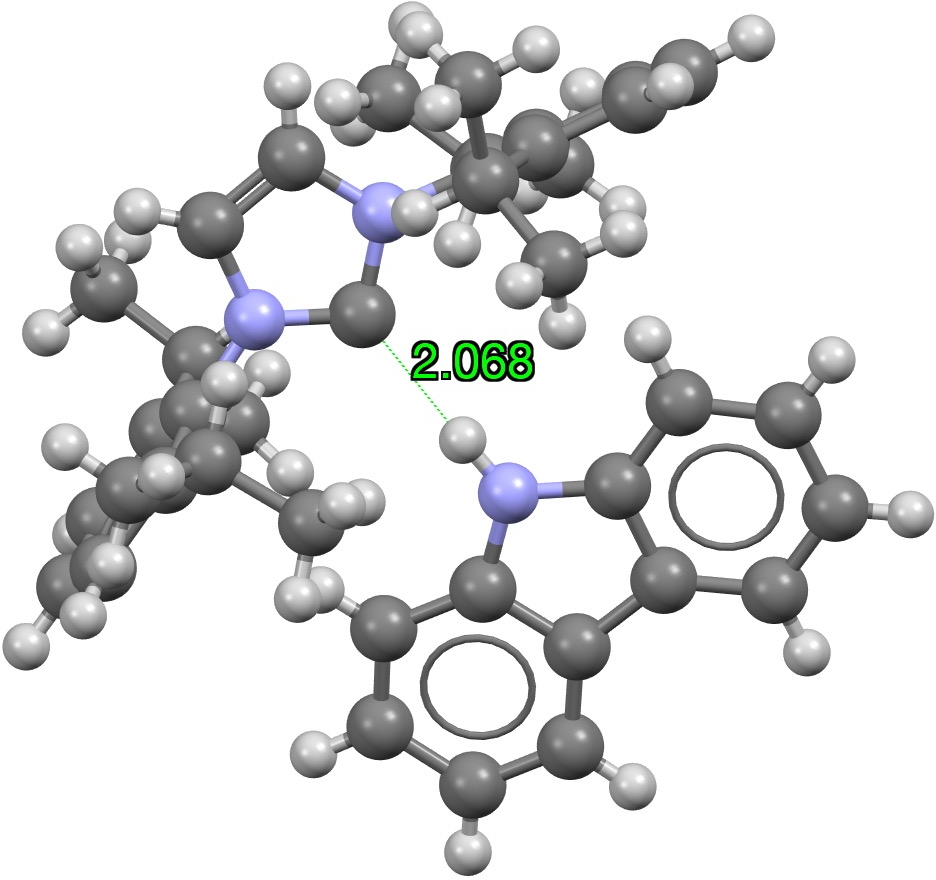
Click on image to view 3D model
Finally C:…HC, of which there are many in the region of 2.5Å, with the shortest example being 2.17Å[cite]10.1016/j.jorganchem.2006.03.018[/cite]
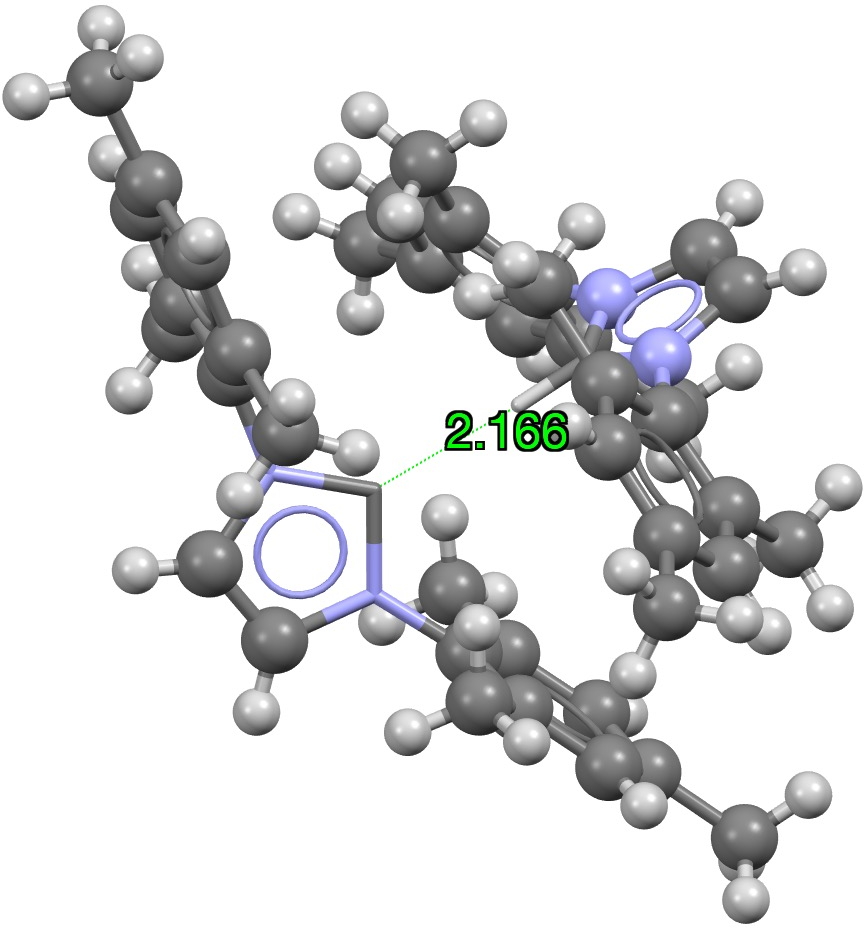
Click on image to view 3D model
To round this off, N≡C:…HX, of which a nice example is (DOI: 10.5517/ccs7whc)[cite]10.1016/j.phytochem.2010.09.004[/cite]
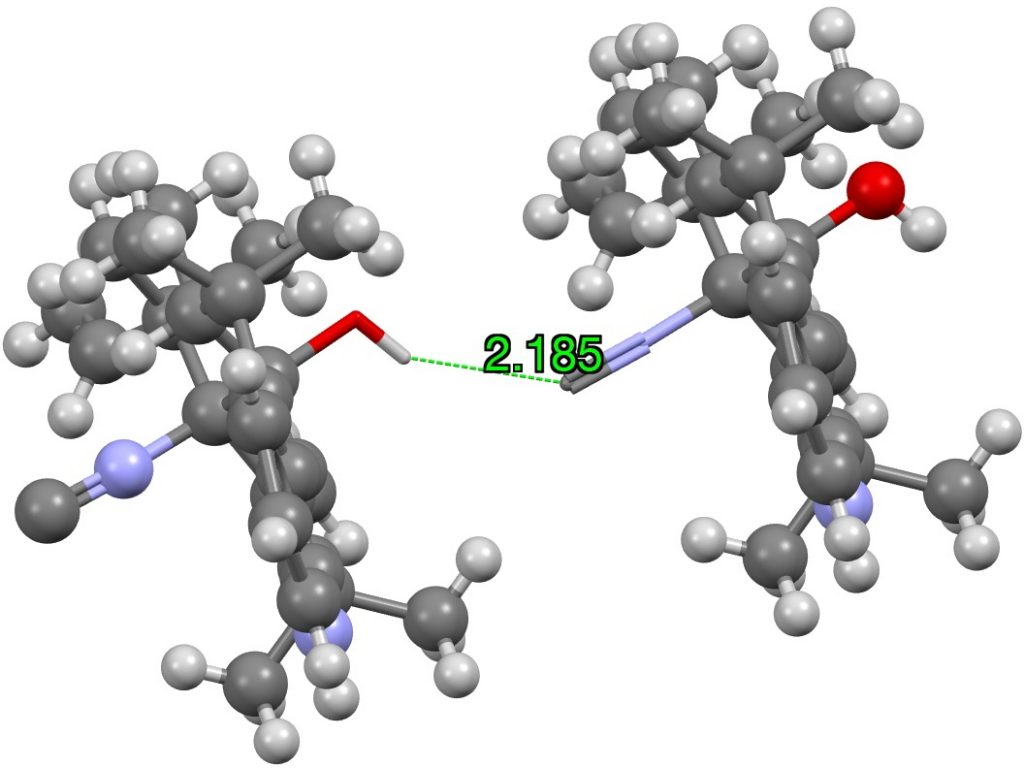
Click on image for 3D model
From which we conclude that carbon as a hydrogen bond acceptor exhibits a diversity of forms, often with surprisingly short distances! I guess the wikipedia article needs updating.
